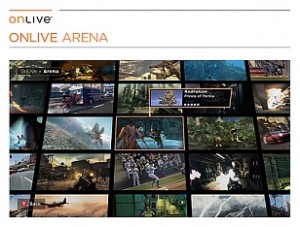It’s quite common to see prediction posts produced in January, and for a futurist blogger the draw to do one is obvious. In that regard, and in the spirit of IBM’s Next 5 in 5 approach, here are five predictions for the next five years:
 1) Smartphone integration
1) Smartphone integration
Let’s start with an easy one. The smartphone is becoming a ubiquitous tool, and their usage will extend to pretty much every aspect of our lives over the next five years. Indeed, you can make a solid argument that for many of us it’s already there. What we are going to see is a complete integration with our daily activities, and there’s a lot of thoughts out there on the future of smartphone design and utility.
The smartphone will become a more regular form of contactless payment. Coupled with access to your spending habits through other means such as loyalty programmes, your shopping experiences will be tailored to your presence in a store even before you step inside. This data will enable stores to directly highlight particular new items or deals that you are likely to be interested in, and indicate them and their in-store location to your handset. The extension of advertising will be used to entice you into stores as you walk by, and a number of sleek and attractive interfaces that collect this data from various sources in the one place will be designed to ensure that the information is neither annoying or overwhelming.
Fast food, restaurant and supermarket purchases will be made even faster, and indeed we’re already seeing these kind of applications, and the concept of a separate loyalty card will become obsolete as you will develop separate accounts for the many different stores that you purchase items for and they will all be stored via your smartphone in the ever-widening data cloud that moves with you.
The connectivity will continue as you travel, and will interface with the more comprehensive systems in place in your home and office. We’re already seeing the emergence of voice-recognition interaction whilst driving, and this is starting to be coupled with the streaming of your smartphone interface in your car’s dashboard. By the time you enter your home, the movements and updates from a day’s worth of digital interaction will already be synced with your home network and your focus will then shift over to the tablet as the central hub device. The key word here is integration, and the smartphone provides the key to integrating all of your movements with your digital homespace; whilst vice versa assimilating your digital identity with the various work and leisure spaces you engage with as you move through the day.
2) Smart TVs and the integrated home entertainment system
We’re starting to hear a lot more now of ‘Smart TVs’, and within the next five years this is something that is likely to gain considerable momentum. This will go beyond merely the internet-connectivity notion of ‘Smart TV’ that currently dominates the marketplace, with moves towards a more interactive and personal experience. If the thought of your TV having a motion and sound sensor attached to it bothers you somewhat, consider already the move into this arena with the likes of Microsoft’s Kinect. At the very least, your television is going to become a much more responsive and dynamic medium then the passive role it has played up until this point – and this will be coupled with it responding to your face, movements and words.
Hard media such as DVDs or Blu-Rays will be on the way out at the top end of the market, and instead this content will be streamed directly to your television through high-bandwidth internet connections. This will negate the need for any kind of storage space, as all of it will be on the cloud, and will also negate the need to have separate boxes of hardware sitting under your TV.
 The videogame platforms of the future will be subscription based services (a present example of which is the OnLive platform that, although not without teething problems, is a solid proof of concept). Digital distribution models in general will be pushed strongly, as they overcome the primary developer concerns of piracy and second-hand sales eating into profits. When this integration occurs, you can expect to see Microsoft release a television and Sony will push big for this move as they face rapidly decreasing profit margins and market share. There’s more news recently of the Google TV service, and there have been rumours of a dedicated Apple TV floating about for a while. A move into this area from the king of consumer confidence-building will push the whole thing into overdrive.
The videogame platforms of the future will be subscription based services (a present example of which is the OnLive platform that, although not without teething problems, is a solid proof of concept). Digital distribution models in general will be pushed strongly, as they overcome the primary developer concerns of piracy and second-hand sales eating into profits. When this integration occurs, you can expect to see Microsoft release a television and Sony will push big for this move as they face rapidly decreasing profit margins and market share. There’s more news recently of the Google TV service, and there have been rumours of a dedicated Apple TV floating about for a while. A move into this area from the king of consumer confidence-building will push the whole thing into overdrive.
We’re not going to see this eventuate completely within the next five years; but the foundations are already in place and are waiting primarily for bandwidth and consumer demand. Streaming movies and music in particular will gain a lot of momentum, and these systems will be built directly into televisions rather than require separate boxes or equipment. The next generation of videogame consoles will still follow the traditional model, but I’d hazard a guess that the generation after that will move away from physical media and pricey-to-produce hardware in favour of cloud-based streaming services.
3) Social Media web-browsing
Facebook will release a web browser. That’s the short version. It’s almost inevitable that there will be a successful attempt to frame our web browsing experience through our social media identity. At the moment this relationship exists the other way around, but there will be a move to shift this perspective. There are already attempts to do this, such as RockMelt backed by the founder of Netscape, but Google will likely soon lead the way with this as they attempt to salvage (or build upon, depending on your level of cynicism) Google + and the many other aspects of their online platform that they currently offer. I’m surprised that Google hasn’t already built a version of Chrome around this concept, but it can’t be far off.
Because of how it has evolved, social media emerged as an online service; but the sphere has increasingly manifested as a digital platform in and of itself. Facebook has been trying to extend its reach beyond the closed-doors of its community for a while now – see Facebook Comments and Recommendations as an immediate case in point. In addition, we have the increasing use of geolocational and augmented reality aspects of social media that don’t require a traditional browser and rely instead on new mobile interface paradigms. As we move towards a semantic web framework, the capacity for our social media identity to be the lens through which we view and contextualise disparate online elements will be pushed. Our emotional attachment to social media identities will almost assure that a well-considered and designed attempt at this will succeed.
Obviously, such a move has the same worrying implications for online privacy that have already been highlighted over the last few years; but like many of these concerns they will be ignored by the majority of web users who choose convenience and accessibility over autonomy and privacy. In addition, a great deal of time will be spent by companies such as Facebook and Google to build in genuine and secure privacy settings and data protection promises (whilst at the same time still promoting the idea of a true-identity web experience as preferable). The alternative is for more open-sourced, decentralised developments to emerge; something which will no doubt occur but whether they can gain enough traction in the hearts and minds of the general public will be a contest worth paying close attention to.
 4) Crowd-sourced Politics
4) Crowd-sourced Politics
We already have all of the technological components available to more accurately and widely canvas public opinion on various political and social agendas. Over the last few years we’ve seen moves towards government petitioning systems in the US and elsewhere, and experimentation with forms of direct democracy that are facilitated via online platforms.
There will always be a demand for this kind of participation in decision making, and an increasing malaise if we continue to ignore this demand as evidenced by the inclusive aspirations of the Occupy movement (which have arguably begun to lose focus on this important issue, to their detriment). Ultimately, representation of this sort can only really be brought to scale effectively through the ideological underpinnings working in close tandem with technological implementation.
What will distinguish such a platform from any other site that has come before (such as user-voted platforms likes Reddit or Digg) is that they will be legitimised by their relationship with both local community and government processes and such efforts will also become more ubiquitous in their usage. Over the next five years, simple and secure polling systems that achieve large citizen uptake will broaden the validity of certain political positions and government programmes; Real-time, large-scale audience feedback to things such as political debates will become commonplace; and more complicated systems will be explored that could enable direct influence on an increasing number of future initiatives. The path that Iceland has embarked upon represents this concept in direct action, and the We The People petition system in the US is experimenting with technological solutions.
In the end, problems will always arise when you rely solely upon basic majority rule systems, and therefore we need to develop a more nuanced concept of what direct democracy means. What needs to be garnered from these recent experiments are some genuine and honest critiques of where the process works and, perhaps more importantly, where the idealism has failed to bring about truly productive results. Expect a lot more work on this from many different areas over the next five years.
5) Data Architecture and Visualisation rises to the top
The exponentially growing levels of data in modern society is astonishing when you begin to get to grips with it. We are now creating more data every day or two then we have collectively since the dawn of civilisation – let’s just let that sink in for a little bit.
The question now revolves around what we do with it all. Most of the data surge comes from user-created content that many would argue has little value outside of the local contexts of the individuals creating and consuming it; but there are wider social trends available in this date. Not least of which are the commercial avenues that data mining is capable of, and they have been discussed at length and will increasingly form the central profit model of many companies.
But in a more general sense, the need to make sense of vast amounts of raw data – to make it usable not just in an algorithmic sense (as in the case with data mining) but in a end-user, visually digestible manner. Platforms are already in use, and increasingly being developed, to allow various sectors to more effectively harness the power of information. The biggest push for this, as always, comes from the intelligence needs of military, police and government (GeoTime is a good example in regards to locational data). From military intelligence, to helping solve local crimes, to creating more efficient public sector workflows; the correct and effective use of data will play a key role not just in the next five years but from here on out.
On a more individual level, the need to create interfaces and visual graphics that help us make sense of the growing amount of data in our own lives will become central – and in some ways will also be invisible. This begins with filtering web searches, news feeds and other information streams according to your preferences and activity profile. Extends into creative and inspiring ways of using data to more effectively put across information and ideas (this great talk from David McCandless at TED explores some of those uses and is definitely worth watching). This is all driven by commercial applications for data mining and building effective platforms for companies to interface with the resulting information.
What we will see towards the end of the next five years is the culmination of this growing culture of data exchange into the public sphere. The manipulation of digital data in its many guises is generally considered to be a subset of information technology. The tools to put this into the hands of an increasing number of people will be developed and pushed over the next five years. Consider the impact that software such as Photoshop or iMovie have had on the current media revolution, now extend that into the realm of data use and analysis and we can begin to see how important a role such things will play in the democratisation of data in the post-digital age.
Do you agree or disagree with these predictions, and what are the implications of them? If you have any more five-year predictions to add, please do comment!





